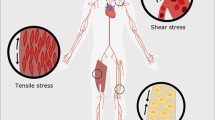Abstract
This work describes a microfludic cell culture device embedded with microstructured posts fabricated by a photolithography technique and a replica-molding technique. BALB/3T3 fibroblast cells were cultured inside the PDMS microfludic chip to form a confluent state, and an external pressure was applied to the top part of the microfluidic chip to remove the cells from the contact areas of the posts. The applied pressure was removed after the formation of wound areas in the cell layer, and the wound healing processes were investigated by monitoring the migration and proliferation of BALB/3T3 fibroblast cells. The function of the microfluidic chip actuated by an applied pressure was investigated by a fluorescent material, and the formation of the wound areas by an applied pressure was investigated by optical microscopy. After the formation of the wound in the cell layer, optical microscopic images of the cells at the same positions were captured by an optical microscope at intervals of 12 h in order to monitor the wound healing processes by migration and proliferation of the cells. Finally, the wound healing was quantitatively assessed by plotting a growth curve. In conclusion, because the microfluidic device developed in this work is very simple and easy to use, the device might be applicable to assessing the wound healing processes and monitoring the migration and proliferation of other cells.
Similar content being viewed by others
References
Lamalice, L., Le Boeuf, F. & Huot, J. Endothelial cell migration during angiogenesis. Circ. Res. 100, 782–794 (2007).
Chung, S., Sudo, R., Vickerman, V., Zervantonakis, I.K. & Kamm, R.D. Microfluidic platforms for studies of angiogenesis, cell migration, and cell-cell interactions. Ann. Biomed. Eng. 38, 1164–1177 (2010).
Reig, G., Pulgar, E. & Concha, M.L. Cell migration: from tissue culture to embryos. Development 141, 1999–2013 (2014).
Broughton, G. II, Janis, J.E. & Attinger, C.E. Wound healing: an Overview. Plast. Reconstr. Surg. 117, 1e–S–32–eS (2006).
Nauta, A., Gurtner, G.C. & Longaker, M.T. Wound healing and regenerative strategies. Oral Dis. 17, 541–549 (2011).
Martin, P. & Nunan, R. Catellular and molecular mechanisms of repair in acute and chronic wound healing. Br. J. Dermatol. 173, 370–378 (2015).
Friedl, P. & Wolf, K. Tumour-cell invasion and migration: diversity and escape mechanisms. Nat. Rev. Cancer 3, 362–374 (2003).
Valastyan, S. & Weinberg, R.A. Tumor metastasis: molecular insights and evolving paradigms. Cell 147, 275–292 (2011).
Boyden, S. The chemotactic effect of mixtures of antibody and antigen on polymorphonuclear leucocytes. J. Exp. Med. 115, 453–466 (1962).
Zigmond, S.H. Oatrientation chamber in chemotaxis. Methods Enzymol. 162, 65–72 (1988).
Zicha, D., Dunn, G.A. & Brown, A.F. A new directviewing chemotaxis chamber. J. Cell. Sci. 99, 769–775 (1991).
Kramer, N. et al. In vitro cell migration and invasion assays. Mut. Res. 752, 10–24 (2013).
Schwarz, J. et al. A microfluidic device for measuring cell migration towards substrate-bound and soluble chemokine gradients. Sci. Rep. 6, 36440 (2016).
Jeon, N.L. et al. Neutrophil chemotaxis in linear and complex gradients of interleukin-8 formed in a microfabricated device. Nat. Biotech. 20, 826–830 (2002).
Moraes, C., Mehta, G., Lesher-Perez, S.C. & Takayama, S. Oatrgans-on-a-chip: a focus on compartmentalized microdevices. Ann. Biomed. Eng. 40, 1211–1227 (2012).
Chen, Y.-C. et al. Single-cell migration chip for chemotaxis-based microfluidic selection of heterogeneous cell populations. Sci. Rep. 5, 9980 (2015).
Velve-Casquillas, G., Le Berre, M., Piel, M. & Tran, P.T. Microfluidic tools for cell biological research. Nano Today 5, 28–47 (2010).
Riahi, R., Yang, Y., Zhang, D.D. & Wong, P.K. Advances in wound-healing assays for probing collective cell migration. J. Lab. Autom. 17, 59–65 (2012).
Nie, F.-Q. et al. On-chip cell migration assay using microfluidic channels. Biomaterials 28, 4017–4022 (2007).
Zhang, M., Li, H., Ma, H. & Qin, J. A simple microfluidic strategy for cell migration assay in an in vitro wound-healing model. Wound Rep. Reg. 21, 897–903 (2013).
Gao, A.X., Tian, T.L., Shi, Z.Z. & Yu, L. A Cost-effective microdevice bridges microfluidic and conventional in vitro scratch/wound-healing assay for personalized therapy validation. BioChip J. 10, 56–64 (2016).
Author information
Authors and Affiliations
Corresponding author
Rights and permissions
About this article
Cite this article
Go, H., Tian, T. & Rhee, S.W. Fabrication of Microfluidic Chip for Investigation of Wound Healing Processes. BioChip J 12, 146–153 (2018). https://doi.org/10.1007/s13206-017-2207-7
Received:
Accepted:
Published:
Issue Date:
DOI: https://doi.org/10.1007/s13206-017-2207-7




